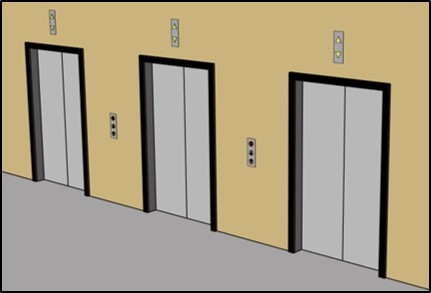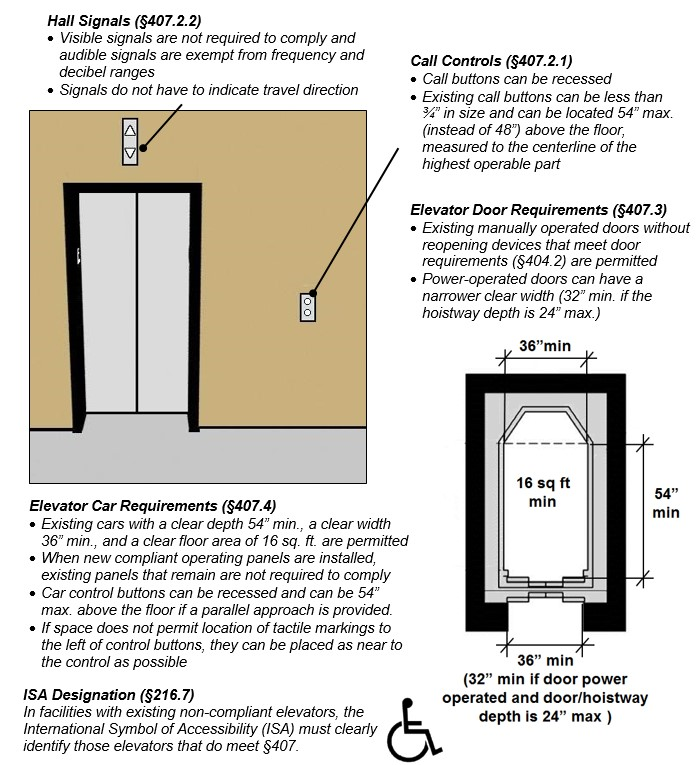Existing Elevators (Alterations)
Alterations to Existing Elevators
When an alteration is made to an existing car, it also must be made to all other cars that respond to the same hall call.
The Standards apply to existing elevators that are altered. Compliance is determined by the scope of the project. For example, if a car operating panel is upgraded, at a minimum the new panel must comply. Other elements of a car that are not altered are not required to comply. Alterations made to an existing car also must be made to each elevator programmed to respond to the same hall call so that a consistent level of accessibility within banks is maintained.
Requirements for new elevators are also applied to those that are altered, but specific exceptions or alternative specifications are permitted for existing elevators that are altered. These provisions unique to existing elevators are summarized here. In addition, altered elevators must meet applicable sections of the referenced A17.1 code that apply to alterations.
Provisions or exceptions specifically for existing elevators do not apply to elevators that are newly added to an existing facility which must comply with the requirements for new elevators. Certain alterations or additions to a facility may trigger the requirement for an accessible route between floors, including:
-
where stairs or escalators are added in an alteration or addition where none existed previously and major structural modifications are necessary, an accessible route must connect each level served by the new stair or escalator (§206.2.3.1);
-
as needed to provide an accessible path of travel to a primary function area that is altered or that is part of an addition, unless the cost is more than 20% of the overall cost (§202.4).
Provisions or Exceptions Specific to Existing (Altered) Elevators
Recommendation: For greater usability, make those altered elements covered by an exception fully comply wherever practicable.




User Comments/Questions
Add Comment/Question